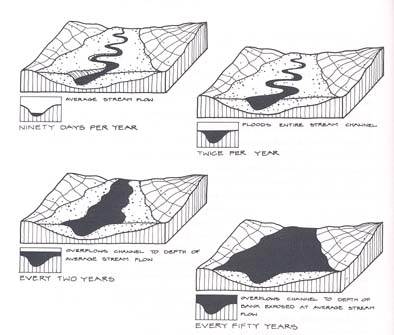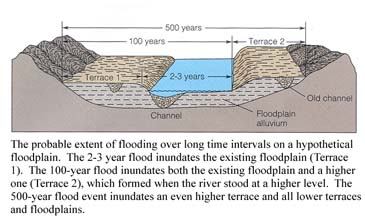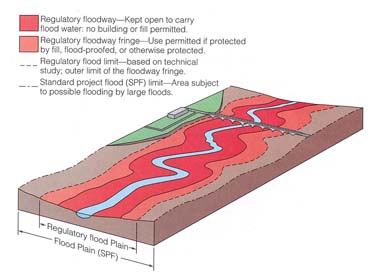| FLOODPLAINS |
|||
| Floodplains are nature's method of disaster damage control. Not all ecosystems can tolerate inundation, or the damage and destruction left by raging floods. Floodplains are special parts of the valley where rising waters can flood. Specially evolved plant communities occupy these areas. Grass-like sedges and rushes capture rushing sediments and help stabilize the stream banks. Trees like red maples and box elders like to grow with their roots in water, and can resprout from these roots if their trunks get broken by rushing debris during a flood. Other trees like sycamores are strong and solid and can withstand many floods. |
|
||
| Rivers and streams overflow predictably into the floodplain. This fact makes building in the floodplain a very dangerous option. Even building on a natural terrace slightly above the floodplain could spell disaster in the next 100 years. |
* Pipkin. Geology and the Environment. p 225.
|
||
| After many
flooding disasters, the government has realized the danger and expense of building on
floodplains. Some regulations restrict the construction of new buildings within
certain limits of the floodplain. However, in the past, planners did not recognize the power of water and the danger of the floodplain. Today, neighborhoods like Mill Creek lie on top of sunken rivers. The water may not be visible, but the land still remembers its floodplain identity. |
* Pipkin. Geology and the Environment. p 234.
|
||
|
|
|
REFERENCES
|




